Mezcal: A Window into the Mexican Spirit
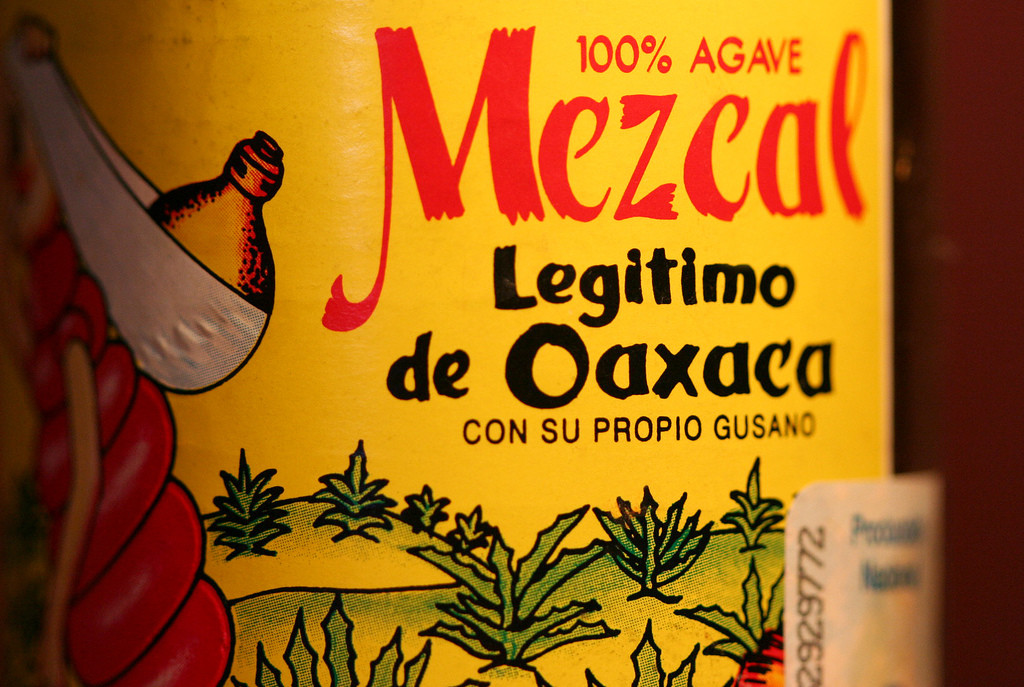
It is too early to be in Plaza Garibaldi, located in the heart of Mexico D.F., Mexico’s sprawling capital. The sun is just beginning to set on a Tuesday, so mariachis and revelers only dot the plaza, instead of packing it with colorful characters like a page from “Where’s Waldo.” Instead of the weekend din of a hundred simultaneous ballads, the chords of lonely guitars and the verses of solitary crooners drift upwards to the terrace bar of the Museum of Tequila and Mezcal (MUTEM), where I take in the scene. Men in ornate charro outfits try to sell serenades to passersby. Jarocho duos in white suits carry harps and hope for a gig.
The scene is unmistakably Mexican. In one corner of the storied plaza is the Salón Tenampa, a bar that has for nearly a century served as a mariachi mecca. It is the anchor of Plaza Garibaldi and the surrounding multitude of cantinas, which range from touristy to seedy. In fact, it is much more than just another cantina —Tenampa was a destination. Following a larger Mexican social pattern of urbanization and northward migration that stretched from the country’s southwest coast to Los Angeles, mariachi music moved from the countryside of Jalisco to the north of Mexico at the turn of the 20th century. Both Tenampa and the music it helped popularize are awash in another most Mexican of traditions — tequila, and its less internationally recognized cousin, mezcal.
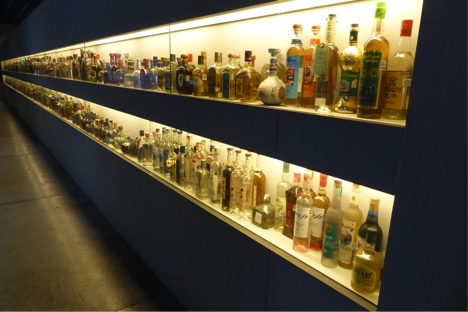
The American popular imagination tends to depict Mexico via stereotypes, some of which have their echoes in Plaza Garibaldi. Many have some connection to reality, but like most stereotypes, they reflect only one reality amongst many. While the caricatures of tequila, playas, and sombreros are obviously unfair to Mexicans, they also rob Americans of a deeper appreciation for an incredibly varied country, where traditional and contemporary cultures differ as greatly as Mexico’s geography (deserts in the north; high plains in the interior; jungles in the south). The decades-long popularization of tequila as a symbol for Mexico has, until very recently, cost American drinkers the opportunity to experience another spirit with deep roots in the Mexican countryside.
What could be more Mexican than tequila? The association echoes reality, given that tequila remains more popular than mezcal in Mexico. The symbolism of tequila has been propagated by the Mexican government and reproduced in music, movies, and millions of mediocre Mexican restaurants north of the border. However, many Americans’ fixation on tequila (as wonderful as it is) has come at the expense of the spirit’s multifaceted cousin — mezcal.
As tequila became increasingly industrialized in the early 20th century, mezcal remained outside the limelight. Tequila went on to international fame and (thanks to government-permitted adulteration) infamy. Mezcal remained a sort of backwoods relative — different, less approachable, and deeply embedded in local differences. Mezcal was a “symbol of resistance and local identity,” in the face of efforts to standardize production, as a placard at the museum proclaimed.
What’s so different about mezcal? The word comes from the indigenous Nahuatl word “mezcalli,” which means “cooked agave” and encompasses any distilled spirit made from the plant. (Tequila is the name of a small town in the state of Jalisco, the center of production of the liquor.) Technically, tequila itself is a variety of mezcal (the saying goes that all tequilas are mezcals, but not all mezacals are tequila). However, there are important differences that have become entrenched as tequila emerged as its own, much larger, category.
The first is the source material. Tequila is always made from the same species of blue agave. However, about 40 different species of agave are used to make different varieties of mezcal. Because different species of agave are indigenous to the differing climates and geographies of Mexico, this is the basis of mezcal’s regional variation. It is reflected, too, in the many names for the plant in Mexico’s dozens of indigenous languages. The blue agave for tequila is well suited to farming, and matures relatively rapidly; agaves used for mezcal can be cultivated or wild, with some rare varieties like the prized arroqueño taking 25–30 years before they are ready.
Second, the spirits are produced in different regions. To have the name “tequila,” the liquor must be produced in the state of Jalisco or specified municipalities in surrounding areas. Mezcal also has a specified region, but it’s larger and includes different plants and techniques. Other agave-based spirits are produced throughout Mexico, like sotol, most common in the north, or raicilla. Agave was central to Mexican cultures long before colonial conquest introduced European distillation techniques. Certain tribal cultures produced a fermented drink called pulque, which had ceremonial importance in central Mexico for thousands of years and is still consumed. Others were important for food, medicine, and in the production of fibers.
Third, there are differences in process. For both tequila and mezcal, the heart of the agave is cut out by field workers called jimadores shortly before the plant flowers, when the concentration of sugars is highest. To break down these sugars for the fermentation process, the heart of the agave is baked. For tequila, this baking is done in large ovens. The baking process for mezcal is much more varied, depending on the materials that were available locally, and the technique that developed over time. Ovens can be used, but in many regions, it is more typical to cook the agave in earthen ovens. This process lends a deep smokiness to some mezcals. While “smoke” is often understood as a flavor marker between tequila and mezcal, it is better seen as a marker of a preparation typical to certain mezcal-producing regions. This is typical of mezcals from the state of Oaxaca, but is often less the case for those from Guerrero and Durango. The guide at the museum emphasized, “Don’t just drink mezcal from Oaxaca. Try different regions and types of agave. That is what gives mezcal its great variation.”
Once the agave heart has cooled, it is chopped or crushed into a pulp. For tequila, the process is mechanized. For mezcal, there is variation ranging from tiny producers that pulp the agave by hand or with basic tools, to stone milling. The pulp is fermented and then distilled, usually from one to three times to produce an alcohol of varying strengths. This might be cut with lower strength “mezcal wine” or mineral water. Creative mezcal producers sometimes introduce new flavors during the distillation process, including herbs, fruits, or chicken (really!). To produce what is known as “mezcal de pechuga,” the distillers hang a chicken breast (cooked, I am told), on which the hot liquor drips before being collected. Sometimes the chicken could be seasoned. In even rarer mezcals, the chicken is replaced with a pig’s head or mountain goat meat. A vegetarian variety of “mezcal de pechuga” instead introduces an uncooked agave heart into the vessel where the mezcal is being stored, giving the liquor a slight yellow coloring and greater sweetness.
Both tequila and mezcal can be consumed un-aged or after aging in wooden barrels. The three categories used for both spirits are joven, reposado, and añejo (young, rested, and aged/vintage). For sipping, tequila often improves with the aging process, which enhances the smoothness and buttery textures. The pleasures of mezcal are in its wildness however, and most connoisseurs prefer it un-aged. Aging reduces its edge and tends to dull the flavors that come from different agaves, which can range from vegetal to mineral to sweet.
Finally, the traditional way to drink mezcal is a bit different. Tequila is, of course, usually paired with a lime and salt (ed. note: known in the bar business as “training wheels”). Mezcal is instead matched with oranges and, if you are in a good mezcal bar, sal de gusano, or “worm salt.” A worm that inhabits agave plants is removed, toasted, ground, and mixed with salt and often chili powder. The edge of the orange wedge is dipped in the worm salt and bites are alternated with sips of mezcal. Also, unlike tequila, which can be knocked back from a number of vessels (ranging from a shot glass to a belly button), mezcal is often sipped from the more humble copita, which is a shallow clay bowl. Contrasted with tequila’s omnipresence, mezcal is a more “selective” drink, a Mexican friend assures me. You don’t drink it with just anyone.
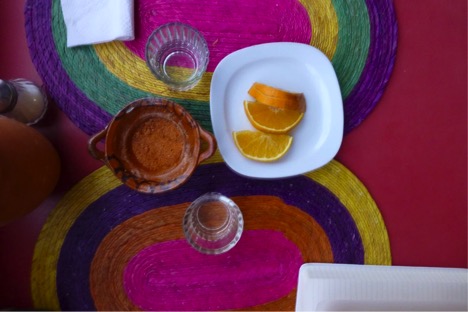
Mezcal, often bootlegged and homemade, remained popular in many parts of Mexico, but is recently enjoying a renaissance in cosmopolitan Mexico City (and from there, spreading internationally). Its rustic quality became “artisanal,” and trendy bars in the city’s hip neighborhoods of Roma and Condesa began to feature it prominently. One of the best is the small bar La Clandestina, located on the edge of Condesa’s Parque España. In the entrance of the dimly lit dive, several shelves of glass jugs glow with red light. A maze of plastic tubes dangles toward the bar, delivering mezcal to the bartender. Though there are now hundreds of brands of mezcal available in Mexico, Clandestina specializes in small, unbranded producers. On your table in the exposed-brick interior, you will find a booklet with a page for each mezcal currently available, describing the type of agave, how long it took to mature, where it was produced, and what methods were used, from baking and pulping to distillation.
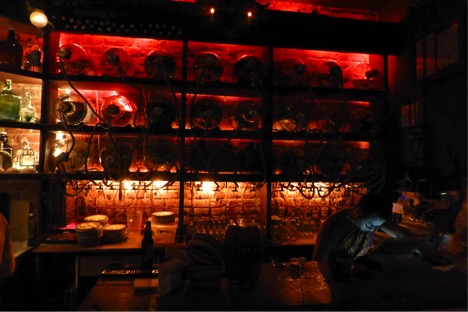
A couple of miles away in the Roma Norte neighborhood, the bar La Nacional pairs Mexican craft beers with a good list of mezcal. The bar also offers other agave spirits, including sotol and raicilla. Closer to the historic center, Bósforo, a bar housed in a narrow, shotgun-style space, offers a frequently rotating selection of mezcal. Mezcal has also made its way into the city’s growing cocktail scene. Yuban, a restaurant specializing in Zapotecan food, pairs mezcal with fresh Mexican fruit juices.
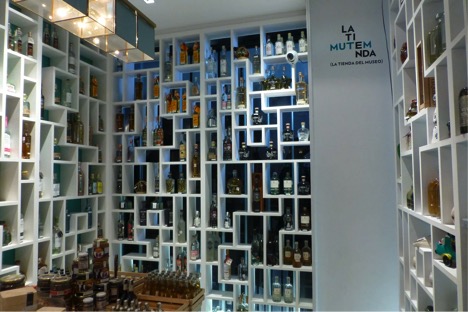
I asked the enthusiastic guide at the Museum of Tequila and Mezcal (side note: world’s best museum gift shop) whether he had been a mezcal aficionado before he began working there. No, he told me. He used to prefer vodka and brandy. Working at the museum was life changing, he laughed. Part of what makes mezcal so exciting is that there is so much to learn about it. It is deeply rooted in local climates, vegetation, culture, and economies. Tequila is likely to remain synonymous with Mexico, united in the American consciousness with the many other (often more harmful) stereotypes we hold of our southern neighbor. However, if you are ready to break those stereotypes down, exploring mescal — not new, but unknown to many — can serve to broaden one’s vision of Mexico, a land of incredible diversity of both spirit and spirits.
Tom Long is a mezcal convert and a visiting professor of International Relations at the Centro de Investigación y Docencia Económicas in Mexico City. He is the author of the forthcoming book Latin America Confronts the United States: Asymmetry and Influence (Cambridge University Press). His work on U.S.-Latin American relations has appeared or is forthcoming in International Security, Diplomatic History, Latin American Research Review, and Foro Internacional. He holds a Ph.D. in International Relations from American University. Follow him on Twitter: @tomlongphd.
Photo credit: Dennis Brekke

